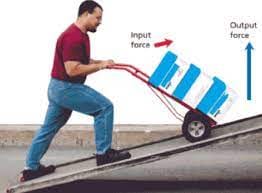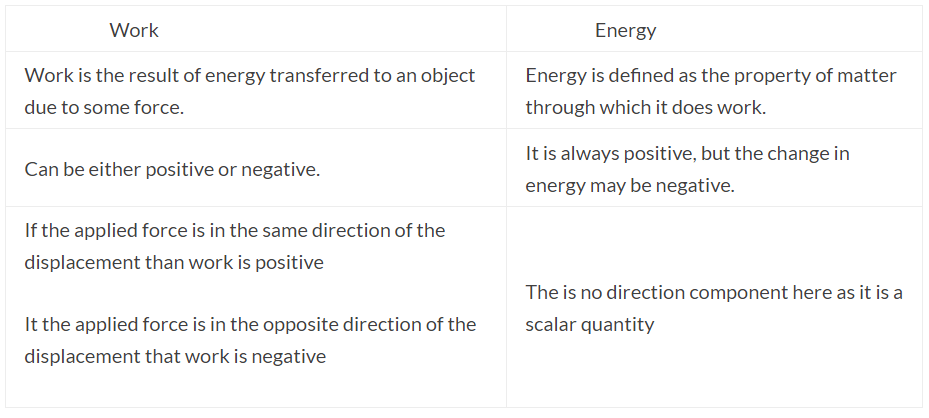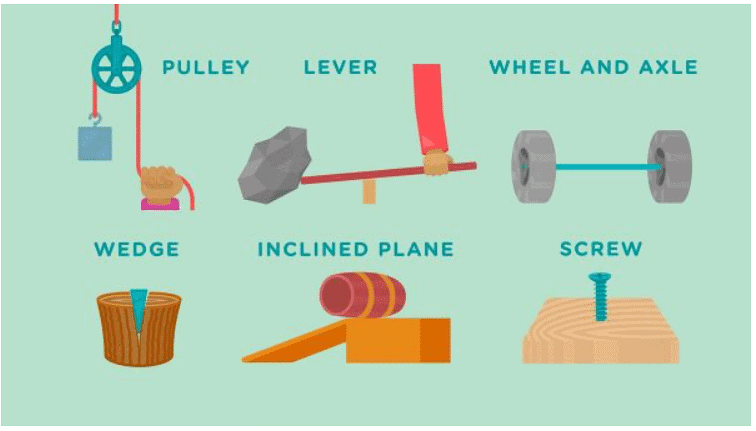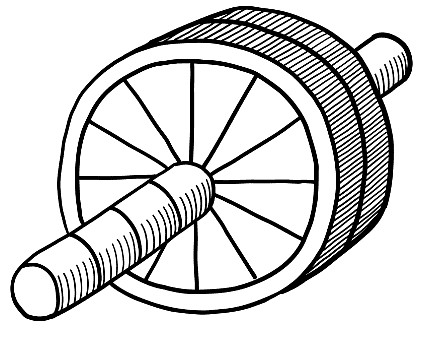Work, Force, Energy and Simple Machines - 2 Class 5 Worksheet Science
Q1: Short answer questions.
(i) You have to load your suitcase onto a truck. You are not able to lift the suitcase. Which simple machine can help you do this? Why?
Ans: We should use an inclined plane as an inclined plane is used to move a heavy load with less effort.

(ii) A single fixed pulley does not reduce the effort required to lift a load. How does it make our work easier?
Ans: Such a pulley makes our work easier by simply changing the direction of the force, i.e. a load is lifted up using a downward effort. It is easier to lift a load up by pulling it down rather than by pulling it up directly.
(iii) How is wind energy more environment friendly than heat energy?
Ans: Using wind to produce energy has fewer effects on the environment than many other energy sources like heat. Wind turbines do not release emissions that can pollute the air or water (with rare exceptions), and they do not require water for cooling as needed to produce heat energy
(iv) What is the law of conservation of energy?
Ans: The law of conservation of energy states that energy can neither be created nor destroyed – only converted from one form of energy to another. This means that a system always has the same amount of energy, unless it’s added from the outside.
(v) Does a screw join two pieces of wood better than a nail? How?
Ans: A screw is better than nails as it holds things better than a nail . This is due to the presence of threading in screws that grips the surrounding material tightly. Also screws are easier to control than nails and can be removed easily.
(vi) Name four different forms of energy.
Ans: Energy exists in many different forms. Examples of these are: light energy, heat energy, mechanical energy, gravitational energy, electrical energy, sound energy, and so on.
(vii) Why is geothermal energy referred to as a renewable source of energy? From where does most of the heat energy come?
Ans: Geothermal energy is a type of renewable energy taken from the Earth’s core which will never exhaust, that’s why it is renewable.
It comes from heat generated during the original formation of the planet and the radioactive decay of materials. This thermal energy is stored in rocks and fluids in the center of the earth.
(viii) Why are machines used?
Ans: A machine is a tool that makes our work easier. It helps us to overcome a larger force (required to move a load) by applying a lesser force (called effort).
(ix) What are the three main parts of a lever?
Ans: The three main parts of a lever are the fulcrum, load, and effort.
(x) Can you give an example of a class 2 lever and explain how it functions?
Ans: Yes, a bottle opener is an example of a class 2 lever. In this lever, the load (the cap of the bottle) is between the fulcrum (the point where the opener pivots) and the effort (the force applied by your hand). This arrangement allows for an increased force, making it easier to lift the cap.
 Bottle Opener
Bottle Opener
Q2: Long answer questions.
(i) Write a note on wind energy and solar energy.
Ans: Wind Energy
- The energy present in moving air or wind is called wind energy.
- Wind is used to produce electricity using wind turbines or wind energy conversion systems.
Solar Energy
- The energy that we get from sunlight is called solar energy.
- It can be used to carry out many functions on the Earth.
- Solar energy is abundant on Earth and is also non-polluting.
- When electricity is obtained from burning fuels, smoke and other polluting gases are formed. But when we use solar energy to get electricity, there is no pollution.
Examples:
- Solar panels convert solar energy into electrical energy, which is used to run machines.
- Solar cookers use sunlight to cook food.
(ii) Differentiate between renewable and non-renewable energy.
Ans:
(iii) What is the difference between work and energy?
Ans:

(iv) What is a simple machine? Name some simple machines and draw diagrams too.
Ans: A simple machine uses a single applied force to get the work done.
- A “simple” machine is one where both the input energy and the output energy are mechanical in nature .
- A simple machine has very few parts.
- A wheelbarrow is an example of a simple machine
Types of Simple Machines
There are mainly 6 types of simple machines.
- A lever
- pulley
- wheel and axle
- wedge
- screw
- and an inclined plane are some simple machines.

(v) Describe the characteristics and provide examples of each class of lever.
Ans:
- Class 1 Lever: In class 1 levers, the fulcrum is between the load and the effort. Examples include a pair of scissors, see-saw, crowbar, and pliers.
- Class 2 Lever: In class 2 levers, the load is between the fulcrum and effort. Examples include a bottle opener, wheelbarrow, and nut cracker. This class of lever always increases force.
- Class 3 Lever: In class 3 levers, the effort is between the fulcrum and load. Examples include a stapler, tweezers, fishing rods, and tongs. This class is used to decrease force for delicate work.

(vi) Explain the concept of a wheel and axle, providing examples of how it is used in everyday life.
Ans: A wheel and axle consist of a wheel attached to a rod called an axle. When the axle is turned, the wheel also moves. Examples of wheel and axle in everyday life include the steering wheel of a car, a screwdriver, a sewing machine, and a doorknob.
 Wheel and Axle
Wheel and Axle
The interaction between the wheel and axle allows for efficient movement and transfer of force, making these devices essential in various applications.
|
43 videos|198 docs|45 tests
|

|
Explore Courses for Class 5 exam
|

|

















